How to Spot Snake Holes in Your Yard—and What to Do If You Find Them
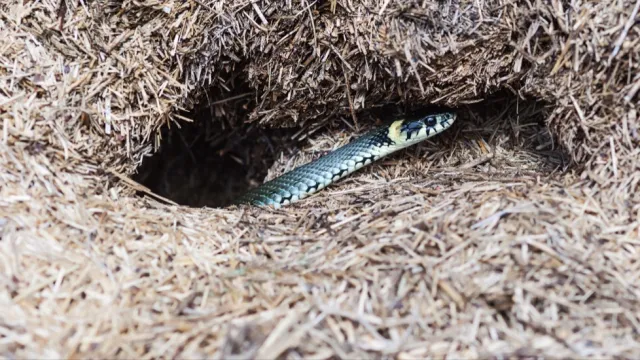
Shed skin, curving trails, or dark brown smears are all signs that a snake may have taken up residence around your home. But according to pest experts, there’s another tell-tale indicator that they’ve gotten comfortable—holes in your lawn. Unsure of what to do if you see one? Keep reading to find out how the pros say you can spot snake holes in your yard—and what steps to take if you find them.
RELATED: 5 Surprising Places Rattlesnakes Like to Hide Around Your Home.
What is a snake hole?
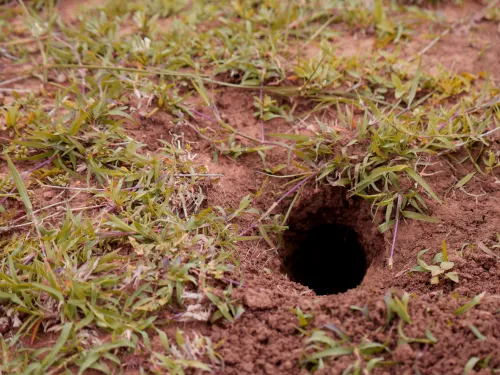
Snake holes are any burrows in the ground where snakes can hide. However, according to Charles van Rees, conservation scientist and editor-in-chief of Gulo in Nature, snake hole is a “misnomer” because “any hole can be a snake-hole for a couple of days or even hours if a slithery reptile is prowling through it or decides to move in.”
“Snakes cannot dig holes by themselves, so you will never really come across a hole that a snake made,” explains van Rees. Instead, they’re leftover nesting spots or hiding places from rodents or other animals. But that doesn’t mean snakes won’t “opportunistically take advantage of holes that are available on the landscape,” adds van Rees.
RELATED: Top 10 Things Attracting Snakes to Your Home.
Here’s how to tell if a snake has moved into a hole in your yard.
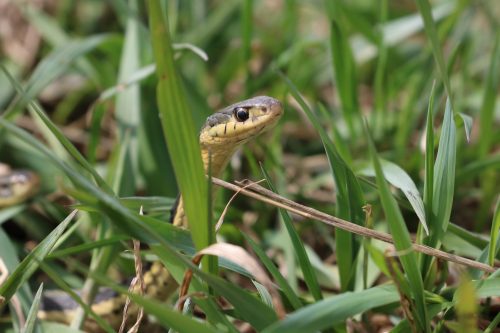
Of course, burrows can be used and abandoned over time. But according to experts, seeing either skins or scat is a good indication that a snake was recently nearby.
“Snake holes are hard to identify because they often use leftover mole or vole holes, so you should look for snakeskin in and around these holes to identify that it’s home to a snake and not a mole,” explains Burns Blackwell, owner of Terminix Triad in North Carolina.
But there is a catch: Van Rees notes that snakes aren’t “constantly shedding their skin,” so it’s important to watch for other indicators.
You might also be able to tell if a snake is using a hole based on the presence of snake droppings, which are often elongated with a “white, paste-like mass on one end (like bird-poop white!),” notes van Rees.
It’s also important to pay attention to the dirt around the hole.
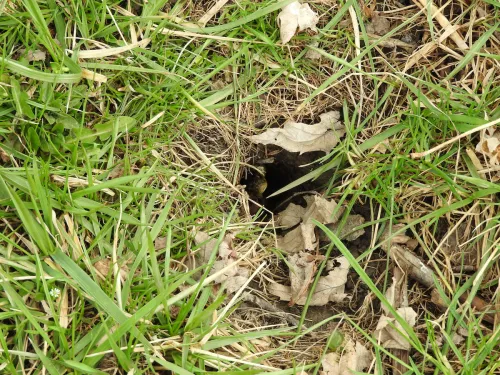
Experts agree that the best way to check if a burrow is active is to examine the soil around it.
“Does it look fresh or like it has been exposed to the air, rain, and sun for a little while?” says van Rees. “If the dirt underneath looks different than what was exposed around the hole, the burrow may be a little older.”
According to Varment Guard Wildlife Services, you can also check if there are spiderwebs or other debris around the hole. “If so, then the hole is most likely empty. If not, there may be a snake nearby,” their experts write.
Tracks are also a dead giveaway. “Even though they don’t have feet, snakes leave tracks behind, and you’ll spot these if a snake is frequenting a burrow near your home,” van Rees points out. These are usually thin, curving lines in the dirt.
RELATED: 11 Cleaning Habits That Are Attracting Snakes to Your Home.
What should you do if you find a snake hole?
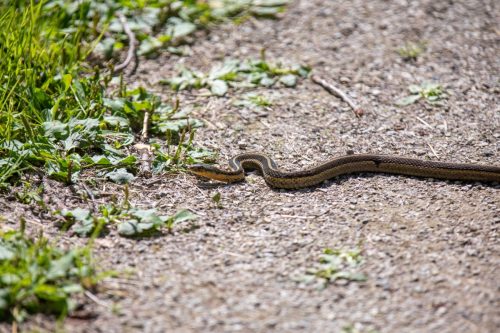
If you find evidence that a snake has moved in, experts say it may be worth figuring out which type it is by keeping a keen eye on your yard or even installing a camera. After all, perfectly harmless non-venomous species of snake will continue to take care of pests that could otherwise wreak havoc on your garden. As van Rees notes, “very few snake species in North America are aggressive enough to cause serious harm to people.”
If you’ve determined that a hole is empty (and you feel comfortable doing so), you can also cover it to ensure a snake doesn’t enter. Varment Guard recommends using “wiring, netting, or burlap.”
Other best practices include keeping pets or children away from the hole, remaining calm, and leaving the snake alone if one happens to be hiding there. However, if you think the snake might be venomous, you should immediately call a pest control expert or your local wildlife and animal control to have a professional safely remove it.